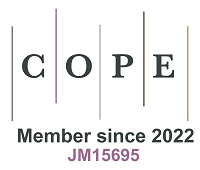REFERENCES
1. Olech M. Conventional and state-of-the-art detection methods of bovine spongiform encephalopathy (BSE). Int J Mol Sci. 2023;24:7135.
2. Richt JA, Hall SM. BSE case associated with prion protein gene mutation. PLoS Pathog. 2008;4:e1000156.
3. Moore SJ, West Greenlee MH, Smith JD, Vrentas CE, Nicholson EM, Greenlee JJ. A comparison of classical and H-type bovine spongiform encephalopathy associated with E211K prion protein polymorphism in wild-type and EK211 cattle following intracranial inoculation. Front Vet Sci. 2016;3:78.
4. Pan KM, Baldwin M, Nguyen J, et al. Conversion of alpha-helices into beta-sheets features in the formation of the scrapie prion proteins. Proc Natl Acad Sci U S A. 1993;90:10962-6.
5. Abu-Rumeileh S, Baiardi S, Polischi B, et al. Diagnostic value of surrogate CSF biomarkers for Creutzfeldt-Jakob disease in the era of RT-QuIC. J Neurol. 2019;266:3136-43.
6. Hermann P, Appleby B, Brandel JP, et al. Biomarkers and diagnostic guidelines for sporadic Creutzfeldt-Jakob disease. Lancet Neurol. 2021;20:235-46.
7. Eraña H, Charco JM, González-Miranda E, et al. Detection of pathognomonic biomarker PrP(Sc) and the contribution of cell free-amplification techniques to the diagnosis of prion diseases. Biomolecules. 2020;10:469.
8. Peden AH, Suleiman S, Barria MA. Understanding intra-species and inter-species prion conversion and zoonotic potential using protein misfolding cyclic amplification. Front Aging Neurosci. 2021;13:716452.
9. Orrú CD, Wilham JM, Hughson AG, et al. Human variant Creutzfeldt-Jakob disease and sheep scrapie PrP(res) detection using seeded conversion of recombinant prion protein. Protein Eng Des Sel. 2009;22:515-21.
10. Saborio GP, Permanne B, Soto C. Sensitive detection of pathological prion protein by cyclic amplification of protein misfolding. Nature. 2001;411:810-3.
11. Morales R, Duran-Aniotz C, Diaz-Espinoza R, Camacho MV, Soto C. Protein misfolding cyclic amplification of infectious prions. Nat Protoc. 2012;7:1397-409.
13. Gonzalez-Montalban N, Makarava N, Ostapchenko VG, et al. Highly efficient protein misfolding cyclic amplification. PLoS Pathog. 2011;7:e1001277.
14. Wang F, Wang X, Yuan CG, Ma J. Generating a prion with bacterially expressed recombinant prion protein. Science. 2010;327:1132-5.
15. Davenport KA, Hoover CE, Denkers ND, Mathiason CK, Hoover EA. Modified protein misfolding cyclic amplification overcomes real-time quaking-induced conversion assay inhibitors in deer saliva to detect chronic wasting disease prions. J Clin Microbiol. 2018:56.
16. Ackermann I, Ulrich R, Tauscher K, et al. Prion infectivity and PrP(BSE) in the peripheral and central nervous system of cattle 8 months post oral BSE challenge. Int J Mol Sci. 2021;22:11310.
17. Moda F. Protein misfolding cyclic amplification of infectious prions. Prion Protein. Elsevier; 2017. pp. 361-74.
18. Cali I, Lavrich J, Moda F, et al. PMCA-replicated PrP(D) in urine of vCJD patients maintains infectivity and strain characteristics of brain PrP(D): transmission study. Sci Rep. 2019;9:5191.
19. Cazzaniga FA, Bistaffa E, De Luca CMG, et al. PMCA-based detection of prions in the olfactory mucosa of patients with sporadic Creutzfeldt-Jakob disease. Front Aging Neurosci. 2022;14:848991.
20. Saá P, Castilla J, Soto C. Ultra-efficient replication of infectious prions by automated protein misfolding cyclic amplification. J Biol Chem. 2006;281:35245-52.
21. Barria MA, Mukherjee A, Gonzalez-Romero D, Morales R, Soto C.
22. Cosseddu GM, Nonno R, Vaccari G, et al. Ultra-efficient PrP(Sc) amplification highlights potentialities and pitfalls of PMCA technology. PLoS Pathog. 2011;7:e1002370.
23. Atarashi R, Satoh K, Sano K, et al. Ultrasensitive human prion detection in cerebrospinal fluid by real-time quaking-induced conversion. Nat Med. 2011;17:175-8.
24. Wilham JM, Orrú CD, Bessen RA, et al. Rapid end-point quantitation of prion seeding activity with sensitivity comparable to bioassays. PLoS Pathog. 2010;6:e1001217.
25. Mok TH, Nihat A, Luk C, et al. Bank vole prion protein extends the use of RT-QuIC assays to detect prions in a range of inherited prion diseases. Sci Rep. 2021;11:5231.
26. Cramm M, Schmitz M, Karch A, et al. Characteristic CSF prion seeding efficiency in humans with prion diseases. Mol Neurobiol. 2015;51:396-405.
27. Cramm M, Schmitz M, Karch A, et al. Stability and reproducibility underscore utility of RT-QuIC for diagnosis of Creutzfeldt-Jakob disease. Mol Neurobiol. 2016;53:1896-904.
28. Hermann P, Laux M, Glatzel M, et al. Validation and utilization of amended diagnostic criteria in Creutzfeldt-Jakob disease surveillance. Neurology. 2018;91:e331-8.
29. Schmitz M, Cramm M, Llorens F, et al. The real-time quaking-induced conversion assay for detection of human prion disease and study of other protein misfolding diseases. Nat Protoc. 2016;11:2233-42.
30. Orrú CD, Groveman BR, Hughson AG, Zanusso G, Coulthart MB, Caughey B. Rapid and sensitive RT-QuIC detection of human Creutzfeldt-Jakob disease using cerebrospinal fluid. mBio. 2015:6.
31. Franceschini A, Baiardi S, Hughson AG, et al. High diagnostic value of second generation CSF RT-QuIC across the wide spectrum of CJD prions. Sci Rep. 2017;7:10655.
32. Orrú CD, Wilham JM, Raymond LD, et al. Prion disease blood test using immunoprecipitation and improved quaking-induced conversion. mBio. 2011;2:e00078-11.
33. Denkers ND, Henderson DM, Mathiason CK, Hoover EA. Enhanced prion detection in biological samples by magnetic particle extraction and real-time quaking-induced conversion. J Gen Virol. 2016;97:2023-9.
34. Hermann P, Schmitz M, Cramm M, et al. Application of real-time quaking-induced conversion in Creutzfeldt-Jakob disease surveillance. J Neurol. 2023;270:2149-61.
35. Candelise N, Baiardi S, Franceschini A, Rossi M, Parchi P. Towards an improved early diagnosis of neurodegenerative diseases: the emerging role of in vitro conversion assays for protein amyloids. Acta Neuropathol Commun. 2020;8:117.
36. Ladner-Keay CL, Griffith BJ, Wishart DS. Shaking alone induces de novo conversion of recombinant prion proteins to β-sheet rich oligomers and fibrils. PLoS One. 2014;9:e98753.
37. Xiao K, Shi Q, Zhou W, et al. Evaluation of the effect of various main elements on the PrPSc detection by real-time quaking-induced conversion assay. Int J Mol Med. 2018;42:3231-7.
38. Green AJ, Zanusso G. Prion protein amplification techniques. Human Prion Diseases. Elsevier; 2018. pp. 357-70.
39. Concha-Marambio L, Pritzkow S, Moda F, et al. Detection of prions in blood from patients with variant Creutzfeldt-Jakob disease. Sci Transl Med. 2016;8:370ra183.
40. Bougard D, Brandel JP, Bélondrade M, et al. Detection of prions in the plasma of presymptomatic and symptomatic patients with variant Creutzfeldt-Jakob disease. Sci Transl Med. 2016;8:370ra182.
41. Barria MA, Lee A, Green AJ, Knight R, Head MW. Rapid amplification of prions from variant Creutzfeldt-Jakob disease cerebrospinal fluid. J Pathol Clin Res. 2018;4:86-92.
42. Moda F, Gambetti P, Notari S, et al. Prions in the urine of patients with variant Creutzfeldt-Jakob disease. N Engl J Med. 2014;371:530-9.
43. Bélondrade M, Nicot S, Mayran C, et al. Sensitive protein misfolding cyclic amplification of sporadic Creutzfeldt-Jakob disease prions is strongly seed and substrate dependent. Sci Rep. 2021;11:4058.
44. Pritzkow S, Ramirez F, Lyon A, et al. Detection of prions in the urine of patients affected by sporadic Creutzfeldt-Jakob disease. Ann Clin Transl Neurol. 2023;10:2316-23.
45. Groveman BR, Orrú CD, Hughson AG, et al. Extended and direct evaluation of RT-QuIC assays for Creutzfeldt-Jakob disease diagnosis. Ann Clin Transl Neurol. 2017;4:139-44.
46. Foutz A, Appleby BS, Hamlin C, et al. Diagnostic and prognostic value of human prion detection in cerebrospinal fluid. Ann Neurol. 2017;81:79-92.
47. McGuire LI, Peden AH, Orrú CD, et al. Real time quaking-induced conversion analysis of cerebrospinal fluid in sporadic Creutzfeldt-Jakob disease. Ann Neurol. 2012;72:278-85.
48. Zhang W, Orrú CD, Foutz A, et al. Large-scale validation of skin prion seeding activity as a biomarker for diagnosis of prion diseases. Acta Neuropathol. 2024;147:17.
49. Shi Q, Chen C, Xiao K, et al. Genetic prion disease: insight from the features and experience of China national surveillance for Creutzfeldt-Jakob disease. Neurosci Bull. 2021;37:1570-82.
50. Orrú CD, Yuan J, Appleby BS, et al. Prion seeding activity and infectivity in skin samples from patients with sporadic Creutzfeldt-Jakob disease. Sci Transl Med. 2017:9.
51. Wang Z, Manca M, Foutz A, et al. Early preclinical detection of prions in the skin of prion-infected animals. Nat Commun. 2019;10:247.
52. Xiao K, Yang X, Zhou W, Chen C, Shi Q, Dong X. Validation and application of Skin RT-QuIC to patients in China with probable CJD. Pathogens. 2021;10:1642.
53. Chen ZY, Shi Q, Xiao K, et al. Multisite skin biopsies vs. cerebrospinal fluid for prion seeding activity in the diagnosis of prion diseases. JAMA Neurol. 2024;81:1263-73.
54. Fiorini M, Iselle G, Perra D, et al. High diagnostic accuracy of RT-QuIC assay in a prospective study of patients with suspected sCJD. Int J Mol Sci. 2020;21:880.
55. Bongianni M, Orrù C, Groveman BR, et al. Diagnosis of human prion disease using real-time quaking-induced conversion testing of olfactory mucosa and cerebrospinal fluid samples. JAMA Neurol. 2017;74:155-62.
56. Orrú CD, Bongianni M, Tonoli G, et al. A test for Creutzfeldt-Jakob disease using nasal brushings. N Engl J Med. 2014;371:519-29.
57. Schmitz M, Silva Correia S, Hermann P, et al. Detection of prion protein seeding activity in tear fluids. N Engl J Med. 2023;388:1816-7.
58. Orrù CD, Wilham JM, Vascellari S, Hughson AG, Caughey B. New generation QuIC assays for prion seeding activity. Prion. 2012;6:147-52.
59. Kraft CN, Bissinger DW, McNulty EE, Denkers ND, Mathiason CK. Enhanced detection of chronic wasting disease in muscle tissue harvested from infected white-tailed deer employing combined prion amplification assays. PLoS One. 2024;19:e0309918.
60. Coysh T, Mead S. The future of seed amplification assays and clinical trials. Front Aging Neurosci. 2022;14:872629.
61. Salvadores N, Shahnawaz M, Scarpini E, Tagliavini F, Soto C. Detection of misfolded Aβ oligomers for sensitive biochemical diagnosis of Alzheimer’s disease. Cell Rep. 2014;7:261-8.
62. Ashton NJ, Brum WS, Di Molfetta G, et al. Diagnostic accuracy of a plasma phosphorylated tau 217 immunoassay for Alzheimer disease pathology. JAMA Neurol. 2024;81:255-63.
63. Palmqvist S, Janelidze S, Quiroz YT, et al. Discriminative accuracy of plasma phospho-tau217 for Alzheimer disease vs other neurodegenerative disorders. JAMA. 2020;324:772-81.
64. Gonzalez-Ortiz F, Kac PR, Brum WS, Zetterberg H, Blennow K, Karikari TK. Plasma phospho-tau in Alzheimer’s disease: towards diagnostic and therapeutic trial applications. Mol Neurodegener. 2023;18:18.
65. Ashton NJ, Pascoal TA, Karikari TK, et al. Plasma p-tau231: a new biomarker for incipient Alzheimer’s disease pathology. Acta Neuropathol. 2021;141:709-24.
66. Simrén J, Leuzy A, Karikari TK, et al; AddNeuroMed consortium. The diagnostic and prognostic capabilities of plasma biomarkers in Alzheimer’s disease. Alzheimers Dement. 2021;17:1145-56.
67. Rossi M, Candelise N, Baiardi S, et al. Ultrasensitive RT-QuIC assay with high sensitivity and specificity for Lewy body-associated synucleinopathies. Acta Neuropathol. 2020;140:49-62.
68. Fairfoul G, McGuire LI, Pal S, et al. Alpha-synuclein RT-QuIC in the CSF of patients with alpha-synucleinopathies. Ann Clin Transl Neurol. 2016;3:812-8.
69. Wang Z, Becker K, Donadio V, et al. Skin α-synuclein aggregation seeding activity as a novel biomarker for Parkinson disease. JAMA Neurol. 2020;78:1-11.
70. Kuzkina A, Bargar C, Schmitt D, et al. Diagnostic value of skin RT-QuIC in Parkinson’s disease: a two-laboratory study. NPJ Parkinsons Dis. 2021;7:99.
71. Kuzkina A, Rößle J, Seger A, et al. Combining skin and olfactory α-synuclein seed amplification assays (SAA)-towards biomarker-driven phenotyping in synucleinopathies. NPJ Parkinsons Dis. 2023;9:79.
72. Perra D, Bongianni M, Novi G, et al. Alpha-synuclein seeds in olfactory mucosa and cerebrospinal fluid of patients with dementia with Lewy bodies. Brain Commun. 2021;3:fcab045.
73. Stefani A, Iranzo A, Holzknecht E, et al; SINBAR (Sleep Innsbruck Barcelona) group. Alpha-synuclein seeds in olfactory mucosa of patients with isolated REM sleep behaviour disorder. Brain. 2021;144:1118-26.
74. Emmi A, Mammana A, Sandre M, et al. Alpha-synuclein RT-QuIC assay in gastroduodenal and skin biopsies of Parkinson disease patients. Ann Clin Transl Neurol. 2025;12:637-42.
75. Okuzumi A, Hatano T, Matsumoto G, et al. Propagative α-synuclein seeds as serum biomarkers for synucleinopathies. Nat Med. 2023;29:1448-55.
76. Vivacqua G, Mason M, De Bartolo MI, et al. Salivary α-Synuclein RT-QuIC correlates with disease severity in de novo Parkinson’s disease. Mov Disord. 2023;38:153-5.
77. Höglinger GU, Adler CH, Berg D, et al. A biological classification of Parkinson’s disease: the SynNeurGe research diagnostic criteria. Lancet Neurol. 2024;23:191-204.
78. Kraus A, Saijo E, Metrick MA 2nd, et al. Seeding selectivity and ultrasensitive detection of tau aggregate conformers of Alzheimer disease. Acta Neuropathol. 2019;137:585-98.
79. Wang Z, Wu L, Gerasimenko M, et al. Seeding activity of skin misfolded tau as a biomarker for tauopathies. Mol Neurodegener. 2024;19:92.
80. Metrick MA 2nd, Ferreira NDC, Saijo E, et al. A single ultrasensitive assay for detection and discrimination of tau aggregates of Alzheimer and Pick diseases. Acta Neuropathol Commun. 2020;8:22.
81. Scialò C, Tran TH, Salzano G, et al. TDP-43 real-time quaking induced conversion reaction optimization and detection of seeding activity in CSF of amyotrophic lateral sclerosis and frontotemporal dementia patients. Brain Commun. 2020;2:fcaa142.
82. Castilla J, Saá P, Hetz C, Soto C.
83. Wang Z, Qin K, Camacho MV, et al. Generation of human chronic wasting disease in transgenic mice. Acta Neuropathol Commun. 2021;9:158.
84. Shahnawaz M, Mukherjee A, Pritzkow S, et al. Discriminating α-synuclein strains in Parkinson’s disease and multiple system atrophy. Nature. 2020;578:273-7.
85. Baiardi S, Mammana A, Rossi M, et al. Phenotypic heterogeneity of variably protease-sensitive prionopathy: a report of three cases carrying different genotypes at PRNP Codon 129. Viruses. 2022;14:367.
86. Zhang W, Xiao X, Ding M, et al. Further characterization of glycoform-selective prions of variably protease-sensitive prionopathy. Pathogens. 2021;10:513.
87. Llewelyn CA, Hewitt PE, Knight RS, et al. Possible transmission of variant Creutzfeldt-Jakob disease by blood transfusion. Lancet. 2004;363:417-21.
88. Gill ON, Spencer Y, Richard-Loendt A, et al. Prevalent abnormal prion protein in human appendixes after bovine spongiform encephalopathy epizootic: large scale survey. BMJ. 2013;347:f5675.
89. Giaccone G, Moda F. PMCA Applications for prion detection in peripheral tissues of patients with variant Creutzfeldt-Jakob disease. Biomolecules. 2020;10:405.
90. Edgeworth JA, Farmer M, Sicilia A, et al. Detection of prion infection in variant Creutzfeldt-Jakob disease: a blood-based assay. Lancet. 2011;377:487-93.
91. Barria MA, Balachandran A, Morita M, et al. Molecular barriers to zoonotic transmission of prions. Emerg Infect Dis. 2014;20:88-97.
92. Jones M, Wight D, Barron R, et al. Molecular model of prion transmission to humans. Emerg Infect Dis. 2009;15:2013-6.
93. Fernández-Borges N, de Castro J, Castilla J.
94. Belondrade M, Nicot S, Béringue V, Coste J, Lehmann S, Bougard D. Rapid and highly sensitive detection of variant Creutzfeldt-Jakob disease abnormal prion protein on steel surfaces by protein misfolding cyclic amplification: application to prion decontamination studies. PLoS One. 2016;11:e0146833.
95. Nagaoka K, Yoshioka M, Shimozaki N, et al. Sensitive detection of scrapie prion protein in soil. Biochem Biophys Res Commun. 2010;397:626-30.
96. Yuan Q, Rowden G, Wolf TM, et al. Sensitive detection of chronic wasting disease prions recovered from environmentally relevant surfaces. Environ Int. 2022;166:107347.
97. Murayama Y, Yoshioka M, Horii H, et al. Protein misfolding cyclic amplification as a rapid test for assessment of prion inactivation. Biochem Biophys Res Commun. 2006;348:758-62.
98. Pritzkow S, Wagenführ K, Daus ML, et al. Quantitative detection and biological propagation of scrapie seeding activity in vitro facilitate use of prions as model pathogens for disinfection. PLoS One. 2011;6:e20384.
99. Bélondrade M, Jas-Duval C, Nicot S, et al. Correlation between bioassay and protein misfolding cyclic amplification for variant Creutzfeldt-Jakob disease decontamination studies. mSphere. 2020:5.
100. Carmo Ferreira N, Caughey B. Cell-free prion protein conversion assays in screening for anti-prion drug candidates. Curr Opin Pharmacol. 2019;44:1-7.
101. Hyeon JW, Kim SY, Lee SM, et al. Anti-Prion Screening for Acridine, Dextran, and Tannic Acid using Real Time-Quaking Induced Conversion: A Comparison with PrPSc-Infected Cell Screening. PLoS One. 2017;12:e0170266.
102. Ding M, Teruya K, Zhang W, et al. Decrease in skin prion-seeding activity of prion-infected mice treated with a compound against human and animal prions: a First Possible biomarker for prion therapeutics. Mol Neurobiol. 2021;58:4280-92.
103. Srivastava A, Wang Q, Orrù CD, et al. Enhanced quantitation of pathological α-synuclein in patient biospecimens by RT-QuIC seed amplification assays. PLoS Pathog. 2024;20:e1012554.







